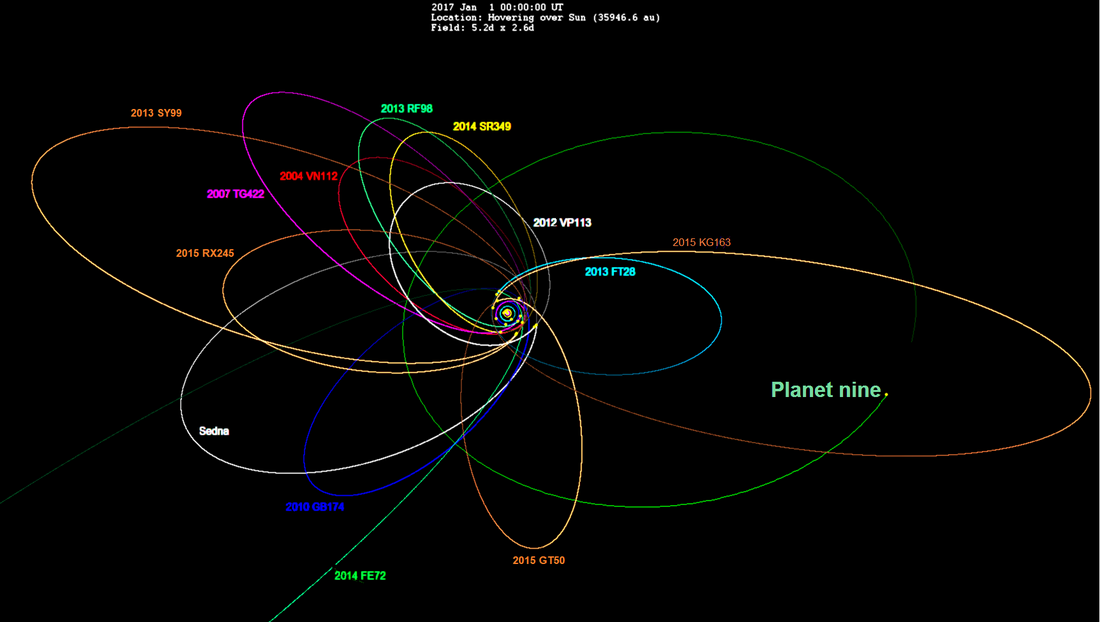Top Qs
Timeline
Chat
Perspective
2015 GT50
Trans-Neptunian object From Wikipedia, the free encyclopedia
Remove ads
2015 GT50, previously known as o5p060, is a trans-Neptunian object orbiting in the Kuiper belt of the outermost Solar System. It was first observed by the Outer Solar System Origins Survey using the Canada–France–Hawaii Telescope at Mauna Kea on 13 April 2015.
Remove ads
Description
Summarize
Perspective
It is one a small number of detached objects with perihelion distances of 30 AU or more, and semi-major axes of 250 AU or more.[2] Such objects cannot reach such orbits without some perturbing object, which has led to the Planet Nine hypothesis, that a massive trans-Neptunian planet is the perturber. However 2015 GT50 is an interesting outlier of these trans-Neptunian objects that make one of the lines of evidence for Planet Nine. Unlike the others, the shape of whose orbits (longitudes of perihelion) either cluster in anti-alignment with the modeled orbit of Planet Nine or cluster in alignment with it, 2015 GT50's major axis is almost at a right angle to that of the putative planet. Konstantin Batygin of Caltech suggests that this is only a cosmetic disagreement with his and Mike Brown's predictions for the positions of these bodies. In fact, he notes that without having to change the putative orbit of Planet Nine, 2015 GT50 falls into one of the predicted resonant orbits. This, he notes, may be a coincidence.[3] This conclusion, however, is not unanimous, and others have instead suggested that the existence of a population of objects with orbital characteristics similar to those of 2015 GT50 may be at odds with the Planet Nine hypothesis.[4]

Remove ads
References
External links
Wikiwand - on
Seamless Wikipedia browsing. On steroids.
Remove ads

